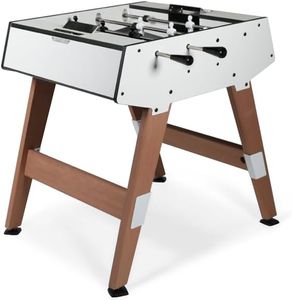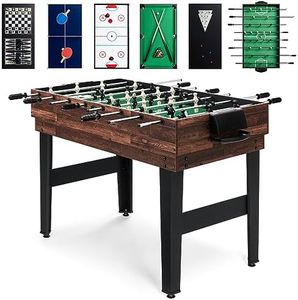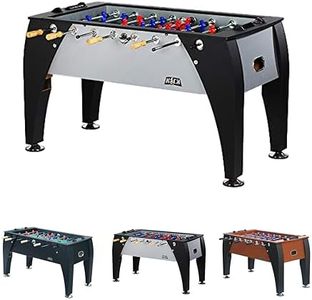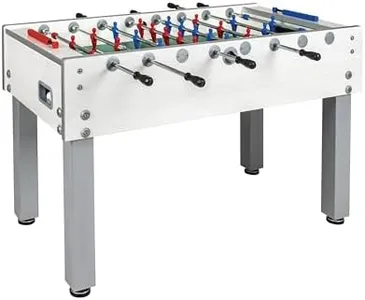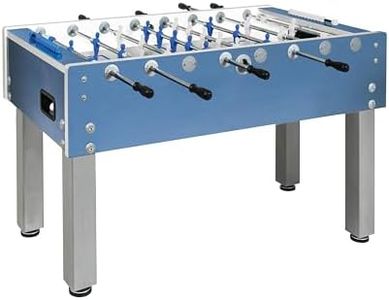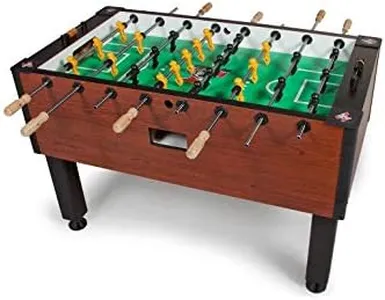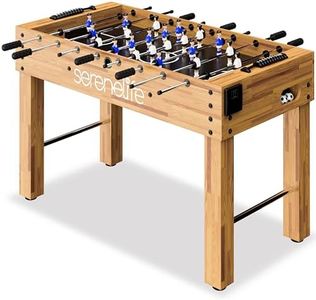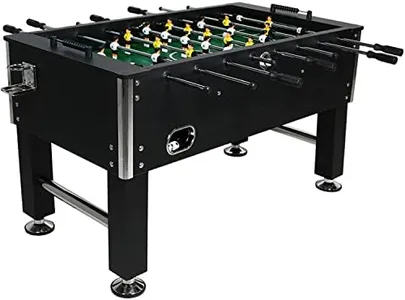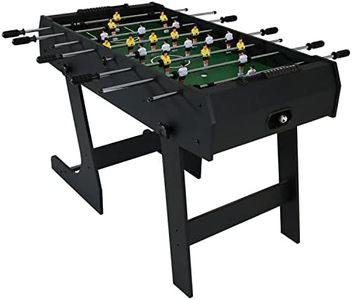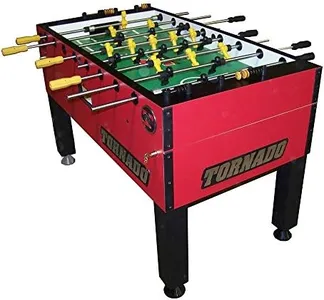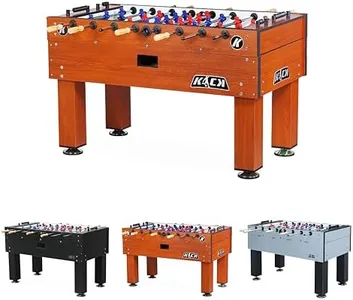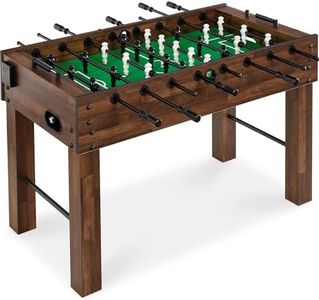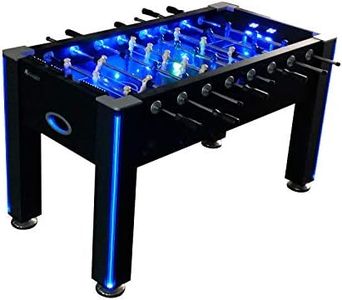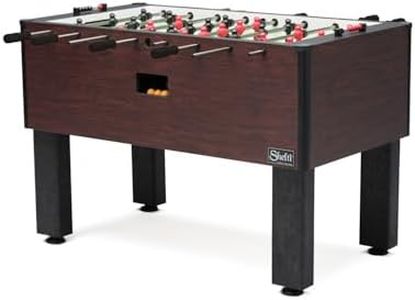10 Best Foosball Tables 2025 in the United States
Our technology thoroughly searches through the online shopping world, reviewing hundreds of sites. We then process and analyze this information, updating in real-time to bring you the latest top-rated products. This way, you always get the best and most current options available.

Our Top Picks
Winner
Best Choice Products 10-in-1 Combo Game Table Set w/Hockey, Foosball, Pool, Shuffleboard, Ping Pong, Checkers, Bowling, and Backgammon - Walnut
Most important from
3835 reviews
The Best Choice Products 10-in-1 Combo Game Table Set is a versatile option offering multiple games like foosball, billiards, table tennis, and more, making it a fun choice for families. The table size is compact with dimensions of 48 inches in length, 24 inches in width, and 31.25 inches in height. Its space-saving design allows various game surfaces to be stacked, fitting well in smaller spaces like a child's bedroom or a game room.
The construction material includes a mix of wood and plastic, providing a sturdy build with non-slip footing for stability, although the use of plastic could affect its durability compared to all-wood tables. The playing surface is designed to support multiple games, which can be an advantage for diverse entertainment but might lack the specialized quality of single-purpose tables. The table includes leg levelers, ensuring a flat playing surface, which is a helpful feature to maintain gameplay quality.
This table set comes with over 50 accessories, providing everything needed for each game, which enhances its value. Assembly is required, and with a weight of 51 pounds, it might need two people for setup. This combo game table is best suited for families and casual players looking for a variety of games in one compact, versatile package.
Most important from
3835 reviews
KICK Legend 55" Foosball Table (Gray)
Most important from
467 reviews
The KICK Legend 55" Foosball Table is a good choice for foosball enthusiasts. Its 55-inch length and substantial dimensions (55" L x 30" W x 36" H) make it a perfect fit for home game rooms. It's designed to accommodate up to four players, providing a great way to enjoy the game with friends and family. The table is made from engineered wood which ensures durability and stability during play, though it may not be as robust as solid wood alternatives. The table's weight of 140 pounds adds to its sturdy build, preventing unwanted movement during intense matches.
The inclusion of both counter-balanced men and uniformed men sets allows for flexible gameplay styles, which is a definite plus for different player preferences. One notable feature is the lifetime warranty provided by KICK, but it's important to note that this applies only to new tables purchased directly from them. The gray color adds a sleek and modern touch, fitting well with various home decors. Assembly is required, which might be a drawback for some users who prefer a ready-to-play setup.
In summary, this table is well-suited for casual to intermediate players who value durability and aesthetics but may not be ideal for those seeking advanced features like specific rods or leg levelers.
Most important from
467 reviews
Garlando G-500 Foosball Table, 50” Inch, Weatherproof, Indoor & Outdoor - Premium Soccer Table for Game Room, Bars, and Patios, Includes 10 Balls, white (26-7938)
Most important from
31 reviews
The Garlando G-500 Foosball Table stands out with its high-quality construction and thoughtful design. The table is made from marine multi-layer plywood with a plastic laminate coating, ensuring durability and weather resistance. The robust steel legs, coated with anti-scratch varnish, add to its sturdiness, and the leg levelers ensure a flat playing surface, even on uneven ground. The inclusion of anti-rust treatment and waterproof materials makes this table suitable for both indoor and outdoor use, and the vinyl cover offers additional protection against the elements.
The sleek design and vibrant color scheme make it an attractive addition to any game room, bar, or patio. The table also features ball returns on each side for quick and easy ball recovery and abacus scorers to keep the game engaging. However, the table is quite heavy at 172 pounds, which might make it challenging to move around frequently. Assembly is required, which might be a bit daunting for some users. Additionally, the table's size (50”L x 30”W x 35”H) might be a bit large for smaller spaces.
This foosball table is suitable for those looking for a durable, weatherproof option that can provide fun for all ages in various settings.
Most important from
31 reviews
Buying Guide for the Best Foosball Tables
Choosing the right foosball table can greatly enhance your playing experience, whether you're a casual player or a serious competitor. When selecting a foosball table, it's important to consider several key specifications to ensure you get a table that meets your needs and preferences. Understanding these specs will help you make an informed decision and find the best fit for you.FAQ
Most Popular Categories Right Now
